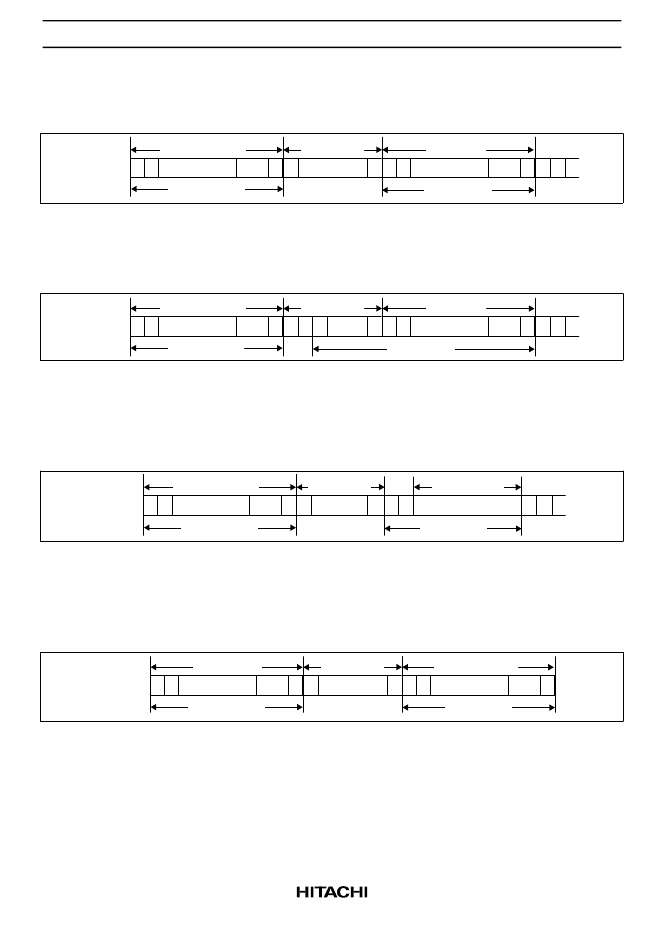- 您現(xiàn)在的位置:買賣IC網(wǎng) > PDF目錄370429 > HB28D064MM2 (Hitachi,Ltd.) MultiMediaCard 16 Mbyte/32 Mbyte/64 Mbyte/128 MByte PDF資料下載
參數(shù)資料
| 型號: | HB28D064MM2 |
| 廠商: | Hitachi,Ltd. |
| 英文描述: | MultiMediaCard 16 Mbyte/32 Mbyte/64 Mbyte/128 MByte |
| 中文描述: | 多媒體16 Mbyte/32 Mbyte/64 Mbyte/128字節(jié) |
| 文件頁數(shù): | 49/88頁 |
| 文件大?。?/td> | 329K |
| 代理商: | HB28D064MM2 |
第1頁第2頁第3頁第4頁第5頁第6頁第7頁第8頁第9頁第10頁第11頁第12頁第13頁第14頁第15頁第16頁第17頁第18頁第19頁第20頁第21頁第22頁第23頁第24頁第25頁第26頁第27頁第28頁第29頁第30頁第31頁第32頁第33頁第34頁第35頁第36頁第37頁第38頁第39頁第40頁第41頁第42頁第43頁第44頁第45頁第46頁第47頁第48頁當前第49頁第50頁第51頁第52頁第53頁第54頁第55頁第56頁第57頁第58頁第59頁第60頁第61頁第62頁第63頁第64頁第65頁第66頁第67頁第68頁第69頁第70頁第71頁第72頁第73頁第74頁第75頁第76頁第77頁第78頁第79頁第80頁第81頁第82頁第83頁第84頁第85頁第86頁第87頁第88頁

HB28E016/D032/D064/B128MM2
49
The host command and the card response are clocked out with the rising edge of the host clock. The delay
between host command and card response is N
CR
clock cycles. The following timing diagram is relevant
for host command CMD3:
S T content CRC E Z * * * * * * Z
CMD
Host command
S T content CRC E Z Z Z
Response
N
CR
cycles
Host active
Card active
Command Response Timing
(Identification Mode)
There is just one Z bit period followed by P bits pushed up by the responding card. The following timing
diagram is relevant for all host commands followed by a response, except CMD1, CMD2 and CMD3:
S T content CRC E Z Z P * * * P
CMD
Host command
S T content CRC E Z Z Z
Response
Card active
N
CR
cycles
Host active
Command Response Timing
(Data Transfer Mode)
Card identification and card operation conditions timing
The card identification (CMD2) and card operation condition (CMD1) timing are processed in the open-
drain mode. The card response to the host command starts after exactly N
ID
clock cycles.
S T content CRC E Z * * * Z
CMD
Host command
S T content
Z Z Z
CID or OCR
N
ID
cycles
Host active
Card active
Identification Timing
(Card Identification Mode)
Last card response - next host command timing
After receiving the last card response, the host can start the next command transmission after at least N
RC
clock cycles. This timing is relevant for any host command.
S T content CRC E Z * * * * * * Z
CMD
Response
S T content CRC E
Host command
N
RC
cycles
Card active
Host active
Timing Response End to Next CMD Start
(Data Transfer Mode)
相關(guān)PDF資料 |
PDF描述 |
|---|---|
| HB28E016MM2 | MultiMediaCard 16 Mbyte/32 Mbyte/64 Mbyte/128 MByte |
| HB28C048A6 | FLASH ATA Card |
| HB28C048C6 | CompactFlash⑩ |
| HB28C016A6 | FLASH ATA Card |
| HB28C016C6 | CompactFlash⑩ |
相關(guān)代理商/技術(shù)參數(shù) |
參數(shù)描述 |
|---|---|
| HB2A102K-S265B | 制造商:Hitano Enterprise Corp 功能描述:Bulk |
| HB2A102K-S565B | 制造商:Hitano Enterprise Corp 功能描述:Bulk |
| HB2A103K-S565B | 制造商:Hitano Enterprise Corp 功能描述: |
| HB2A122K-S265B | 制造商:Hitano Enterprise Corp 功能描述: |
| HB2A122K-S565B | 制造商:Hitano Enterprise Corp 功能描述:Bulk |
發(fā)布緊急采購,3分鐘左右您將得到回復。